In the ever-evolving world of digital marketing, search engine optimization (SEO) remains a critical component for driving organic traffic and improving your website’s visibility in search results. Google Analytics is a powerful ally in your quest for SEO success, providing valuable data and insights to help you optimize your website and outrank the competition.
In this article, we’ll delve into the top strategies and best practices for improving your SEO with Google Analytics. From setting up your account for SEO success to monitoring site speed, user engagement, and competitor performance, we’ve got you covered. So, buckle up and get ready for an exciting journey to better search rankings and increased website traffic.
Whether you’re an SEO novice or a seasoned pro, the tips and techniques we’ll share in this article will help you leverage Google Analytics to its full potential, uncovering new opportunities for growth and optimization. Remember, the key to SEO success is continuous learning, experimentation, and improvement – and with Google Analytics by your side, you’re well on your way to mastering the art of SEO. Let the adventure begin!
Table of Contents
ToggleSetting Up Google Analytics for SEO Success
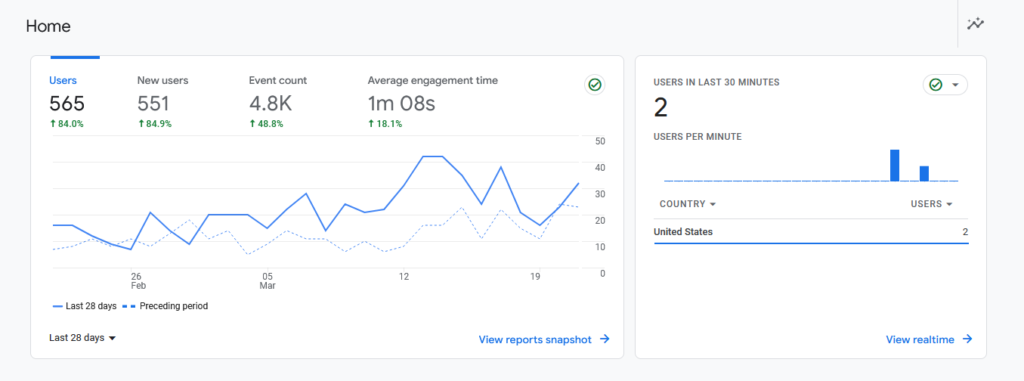
To make the most of Google Analytics for your Charleston SEO efforts, it’s essential to set up your account correctly and configure it for maximum insights. By taking the time to optimize your Google Analytics setup, you’ll be better equipped to analyze your website’s performance and make data-driven improvements.
A. Proper Installation and Configuration
- Verify that your Google Analytics tracking code is correctly installed on every page of your website.
- Set up multiple views for your property, including a raw data view, a test view, and a master view.
- Filter out internal traffic and spam referrals to maintain the accuracy of your data.
B. Integrating with Google Search Console
- Connect your Google Analytics account with Google Search Console to gain insights into organic search performance, impressions, and click-through rates.
- Monitor your website’s search performance and identify potential issues related to indexing, crawling, or mobile usability.
- Leverage Search Console data within Google Analytics to better understand the relationship between organic search traffic and user behavior.
C. Creating Custom SEO Dashboards
- Build custom SEO dashboards in Google Analytics to track key metrics, such as organic traffic, bounce rate, and average session duration.
- Include widgets for top landing pages, search queries, and device usage to gain a comprehensive view of your SEO performance.
- Regularly review your custom dashboards to identify trends, opportunities, and areas for improvement.
By setting up your Google Analytics account with SEO success in mind, you’ll be well-prepared to monitor your website’s performance, analyze your data, and make strategic improvements. Keep refining your setup and experimenting with new features and configurations to stay ahead of the curve and maximize your SEO efforts.
Identifying and Analyzing Organic Traffic
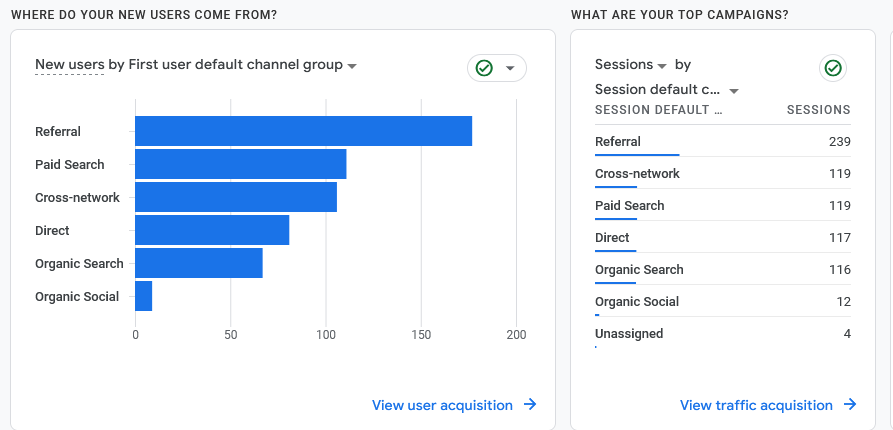
Organic traffic plays a crucial role in your website’s overall performance and success. By understanding where your organic traffic is coming from and which pages are attracting visitors, you can fine-tune your SEO strategy to drive even more targeted traffic to your site. Here’s how to use Google Analytics to identify and analyze your organic traffic.
A. Analyzing Organic Traffic Sources
- Navigate to the “Acquisition” > “All Traffic” > “Channels” report to view the performance of various traffic sources, including organic search.
- Dive deeper into the organic search report to identify top-performing search engines and analyze user behavior metrics such as bounce rate and session duration.
- Use this data to optimize your SEO strategy for the most impactful search engines and improve user engagement.
B. Understanding Landing Page Performance
- Access the “Acquisition” > “Search Console” > “Landing Pages” report to view the performance of pages that are driving organic traffic.
- Evaluate key metrics like impressions, clicks, click-through rate (CTR), and average position to identify top-performing pages and potential areas for improvement.
- Optimize high-performing landing pages with relevant keywords, engaging content, and strong calls-to-action to further enhance their SEO performance.
C. Identifying High-Performing Keywords
- Review the “Acquisition” > “Search Console” > “Queries” report to discover the search queries that are driving traffic to your site.
- Analyze metrics like impressions, clicks, and CTR to identify high-performing keywords and potential opportunities for targeting new keywords.
- Use these insights to refine your keyword strategy, create targeted content, and improve your website’s search visibility.
By closely examining your organic traffic data in Google Analytics, you can uncover valuable insights that will help you optimize your SEO strategy and attract more visitors to your website. Keep monitoring your organic traffic performance and adjusting your approach as needed to drive continuous growth and improvement.
Monitoring and Optimizing Site Speed
Site speed is a critical factor for both user experience and SEO. Search engines like Google prioritize fast-loading websites in search results, while visitors are more likely to engage with and convert on sites that load quickly. Let’s explore how to use Google Analytics to monitor site speed and implement strategies to improve it.
A. Importance of Site Speed for SEO
- Improved search rankings: Faster-loading websites are more likely to rank higher in search engine results.
- Enhanced user experience: Visitors are more likely to stay on your site and engage with your content if it loads quickly.
- Increased conversions: Faster-loading pages can lead to higher conversion rates and better overall performance.
B. Using Google Analytics to Monitor Site Speed
- Access the “Behavior” > “Site Speed” > “Overview” report to view key site speed metrics such as average page load time, server response time, and server connection time.
- Explore the “Page Timings” report to compare the load times of individual pages and identify potential bottlenecks or issues.
- Use the “Speed Suggestions” report to receive personalized recommendations from Google on how to improve your site’s speed.
C. Strategies for Improving Site Speed
- Optimize images: Compress and resize images to reduce file sizes without sacrificing quality.
- Enable browser caching: Store static files in the visitor’s browser to reduce server load and improve load times for returning users.
- Minify CSS, JavaScript, and HTML files: Remove unnecessary characters and whitespace to reduce file sizes and improve load times.
- Implement a content delivery network (CDN): Distribute your website’s content across a network of servers to reduce latency and improve load times for users around the world.
By monitoring and optimizing your site speed with Google Analytics, you can improve your website’s performance, enhance user experience, and boost your search engine rankings. Remember, site speed optimization is an ongoing process, so continue to monitor your performance and make adjustments as needed to maintain a fast-loading website that keeps visitors and search engines happy.
Analyzing and Improving User Engagement
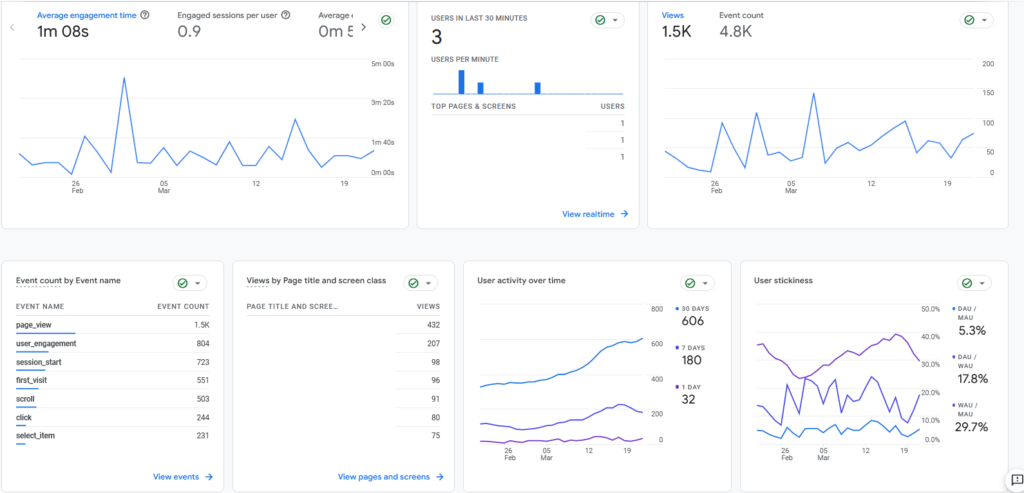
User engagement is a crucial aspect of SEO, as search engines like Google prioritize websites that provide a positive user experience. By analyzing user engagement metrics in Google Analytics, you can identify areas for improvement and make data-driven decisions to optimize your content and website design. Here’s how:
A. Tracking User Engagement Metrics
- Monitor key engagement metrics, such as bounce rate, pages per session, and average session duration, in the “Audience” > “Overview” report.
- Examine the “Behavior” > “Site Content” > “All Pages” report to gain insights into individual page performance and user engagement.
- Use the “Audience” > “Behavior” > “Engagement” report to analyze how long visitors are staying on your site and how many pages they’re viewing.
B. Identifying and Optimizing High Bounce Rate Pages
- Review the “All Pages” report to find pages with high bounce rates, which indicate that users are leaving your site without engaging further.
- Investigate potential causes for high bounce rates, such as slow load times, irrelevant content, or poor site design.
- Implement strategies to reduce bounce rates, including improving page load times, providing relevant and engaging content, and optimizing your website’s layout and design.
C. Enhancing Content Quality and Relevance
- Use Google Analytics data to identify popular content topics and formats that resonate with your audience.
- Optimize your content for relevant keywords and search queries to attract the right visitors to your site.
- Focus on creating high-quality, valuable content that provides answers, solutions, or insights to keep users engaged and encourage them to explore your site further.
By analyzing and improving user engagement, you can create a website that both visitors and search engines love. Continuously monitor your engagement metrics in Google Analytics, and use these insights to optimize your content and site design for a better user experience. In turn, this will help boost your search engine
Tracking and Measuring SEO Goals and Conversions
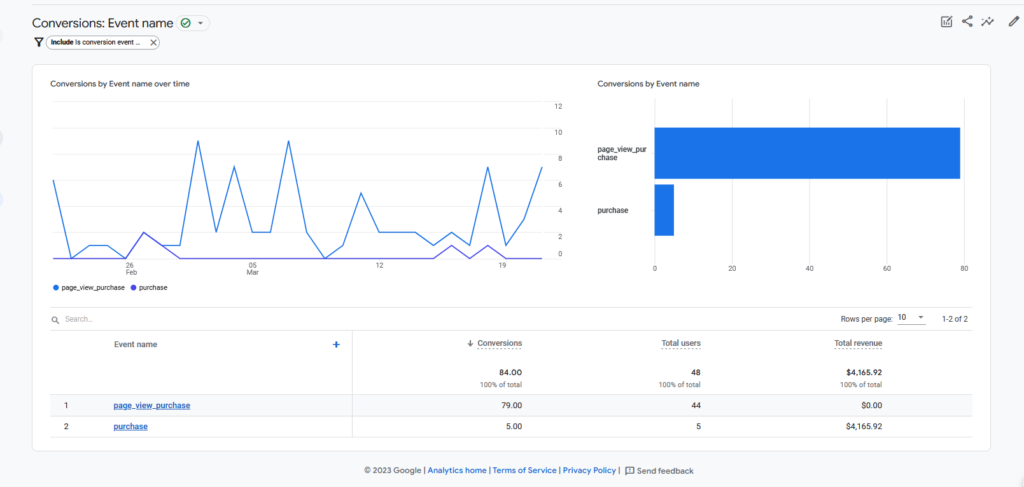
While driving organic traffic to your website is important, it’s equally crucial to ensure that visitors are taking desired actions once they arrive. By setting up goals and tracking conversions in Google Analytics, you can measure the effectiveness of your SEO efforts and identify opportunities for improvement. Let’s dive into how to track and measure your SEO goals and conversions.
A. Defining and Setting Up Goals
- Identify the key actions you want users to take on your website, such as signing up for a newsletter, making a purchase, or downloading a resource.
- Set up goals in Google Analytics by navigating to the “Admin” > “View” > “Goals” section and creating custom goals for each desired action.
- Assign a monetary value to each goal to quantify the impact of conversions and help prioritize optimization efforts.
B. Analyzing Goal Performance
- Monitor goal performance in the “Conversions” > “Goals” > “Overview” report, which provides key metrics such as conversion rate, total completions, and goal value.
- Use the “Conversions” > “Goals” > “Funnel Visualization” report to identify potential bottlenecks or issues in your conversion funnel.
- Leverage the “Conversions” > “Multi-Channel Funnels” > “Top Conversion Paths” report to understand how different marketing channels contribute to your conversions.
C. Optimizing for Conversions
- Analyze your goal performance data to identify areas for improvement, such as low-converting landing pages or high exit rates in your conversion funnel.
- Implement optimization strategies, such as improving page load times, enhancing user experience, and creating compelling calls-to-action.
- Continuously monitor and refine your SEO efforts to maximize conversions and achieve your website’s objectives.
By tracking and measuring SEO goals and conversions in Google Analytics, you can ensure that your efforts are driving tangible results and contributing to your website’s success. Regularly review your goal performance data, and use these insights to optimize your site and improve your conversion rates. With a data-driven approach, you’ll be better equipped to make informed decisions and achieve your desired outcomes.
Leveraging Custom Segments for SEO Analysis
Custom segments in Google Analytics provide a powerful way to analyze your website’s data by isolating specific subsets of users, traffic sources, or content. By leveraging custom segments, you can gain deeper insights into your SEO performance and tailor your strategy to better target and engage your audience. Let’s explore how to use custom segments for SEO analysis.
A. Creating Custom Segments for SEO
- Navigate to any report in Google Analytics and click on “Add Segment” at the top of the page.
- Choose “New Segment” to create a custom segment based on criteria such as traffic source, user behavior, or content type.
- Save your custom segments and apply them to your reports to analyze your data from a unique perspective.
B. Examples of Custom Segments for SEO
- Organic traffic: Isolate users who arrived at your site through organic search to analyze their behavior and engagement.
- Mobile users: Segment users based on their device type to understand how mobile visitors interact with your site and identify areas for improvement.
- High-converting users: Create a segment of users who have completed a specific goal or conversion to analyze their behavior and identify common patterns.
C. Analyzing and Applying Custom Segment Insights
- Compare the performance of different custom segments to identify trends, opportunities, or issues that may impact your SEO strategy.
- Use insights from your custom segments to optimize your website’s content, layout, and design for specific user groups or traffic sources.
- Continuously review and update your custom segments to stay current with your audience’s evolving needs and preferences.
Leveraging custom segments in Google Analytics can provide valuable insights that help you fine-tune your SEO strategy and better target your audience. By creating and analyzing custom segments, you can identify opportunities for growth, optimize your website’s performance, and deliver a more engaging and relevant user experience. Embrace the power of custom segments to gain a deeper understanding of your website’s data and unlock new possibilities for SEO success.
Monitoring and Addressing Technical SEO Issues
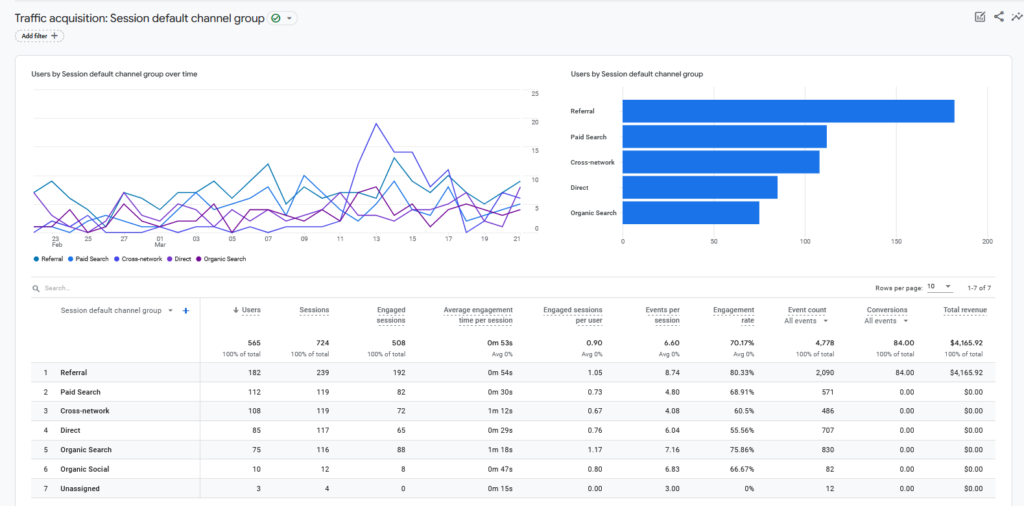
Technical SEO plays a critical role in ensuring that search engines can effectively crawl, index, and rank your website. While Google Analytics primarily focuses on user behavior and engagement metrics, it can still be used to help identify and address some technical SEO issues. Let’s explore how to monitor and tackle these issues using Google Analytics and other complementary tools.
A. Identifying Technical SEO Issues with Google Analytics
- Review the “Acquisition” > “All Traffic” > “Channels” report to spot any unusual drops in organic traffic, which could indicate technical issues.
- Examine the “Site Speed” reports under the “Behavior” section to identify potential performance issues related to page load times.
- Monitor the “All Pages” report in the “Behavior” > “Site Content” section to look for any significant changes in pageviews, which might signal crawlability or indexation problems.
B. Complementing Google Analytics with Google Search Console
- Link your Google Analytics account with Google Search Console to access more detailed information on your website’s search performance and technical issues.
- Use Google Search Console’s “Coverage” report to identify crawl errors, such as 404 Not Found pages or server errors, that can hinder your SEO performance.
- Monitor the “Core Web Vitals” report in Google Search Console to assess your website’s user experience metrics, including loading performance, interactivity, and visual stability.
C. Addressing Technical SEO Issues
- Fix crawl errors by updating broken links, creating proper redirects, and addressing server issues to ensure search engines can access and index your content.
- Optimize your site’s performance by implementing strategies such as image compression, browser caching, and minifying CSS, JavaScript, and HTML files.
- Enhance your website’s mobile-friendliness by adopting responsive design principles and optimizing your content for mobile users.
By using Google Analytics in conjunction with Google Search Console, you can monitor and address various technical SEO issues that can impact your website’s search engine performance. Regularly review your data to identify potential problems, and take prompt action to resolve them. A well-maintained, technically sound website will not only improve your SEO performance but also provide a better overall user experience for your visitors.
Competitor Analysis and Benchmarking
Understanding your competitors’ performance and strategies is essential for staying ahead in the ever-evolving world of SEO. While Google Analytics doesn’t provide direct competitor data, it does offer benchmarking features that allow you to compare your website’s performance with that of similar businesses. Here’s how to leverage these features for competitor analysis and benchmarking:
A. Setting Up Benchmarking in Google Analytics
- Navigate to the “Admin” > “Account” > “Account Settings” section and ensure that the “Benchmarking” option is enabled.
- Go to the “Audience” > “Benchmarking” > “Channels” report to access data on your website’s performance compared to industry averages.
- Customize your benchmarking settings by selecting your industry vertical, country/region, and website size (based on the number of sessions) to get more accurate comparisons.
B. Analyzing Competitor Performance with Benchmarking
- Review the various benchmarking reports, such as “Channels,” “Location,” and “Devices,” to identify areas where your website is underperforming or outperforming industry averages.
- Use these insights to pinpoint strengths and weaknesses in your SEO strategy, and adjust your efforts accordingly to stay competitive.
- Keep in mind that benchmarking data is anonymized and aggregated, so you won’t see specific competitors but rather a general overview of industry performance.
C. Complementing Google Analytics with Third-Party Tools
- Use tools like SEMrush, Ahrefs, or Moz to conduct more in-depth competitor analyses, including backlink profiles, keyword rankings, and content performance.
- Analyze competitor websites to identify gaps in their SEO strategies, and capitalize on these opportunities to gain a competitive edge.
- Continuously monitor and adapt your SEO efforts based on industry trends and competitor performance to maintain a strong presence in search engine results.
By leveraging Google Analytics’ benchmarking features and incorporating third-party tools, you can gain valuable insights into your competitors’ performance and make data-driven decisions to improve your SEO strategy. Remember to regularly review your benchmarking data and stay informed about industry trends and best practices. By staying proactive and adaptive, you can maintain a competitive edge and achieve long-term success in your SEO efforts.
Conclusion
Improving SEO with Google Analytics is a powerful approach to maximizing your website’s visibility and driving organic traffic. By leveraging the wealth of data and insights provided by Google Analytics, you can fine-tune your SEO strategy, address technical issues, and stay ahead of the competition. In this article, we’ve explored various strategies and best practices for enhancing your SEO performance using Google Analytics, including:
- Setting up Google Analytics for SEO success
- Identifying and analyzing organic traffic
- Monitoring and optimizing site speed
- Analyzing and improving user engagement
- Tracking and measuring SEO goals and conversions
- Leveraging custom segments for SEO analysis
- Monitoring and addressing technical SEO issues
- Conducting competitor analysis and benchmarking
By implementing these strategies and regularly reviewing your Google Analytics data, you’ll be well-equipped to optimize your website for search engines, enhance user experience, and ultimately achieve your online business objectives. Remember that SEO is an ongoing process that requires continuous learning, adaptation, and improvement. Stay committed to data-driven decision-making and keep refining your SEO efforts to stay ahead in the ever-changing digital landscape.





